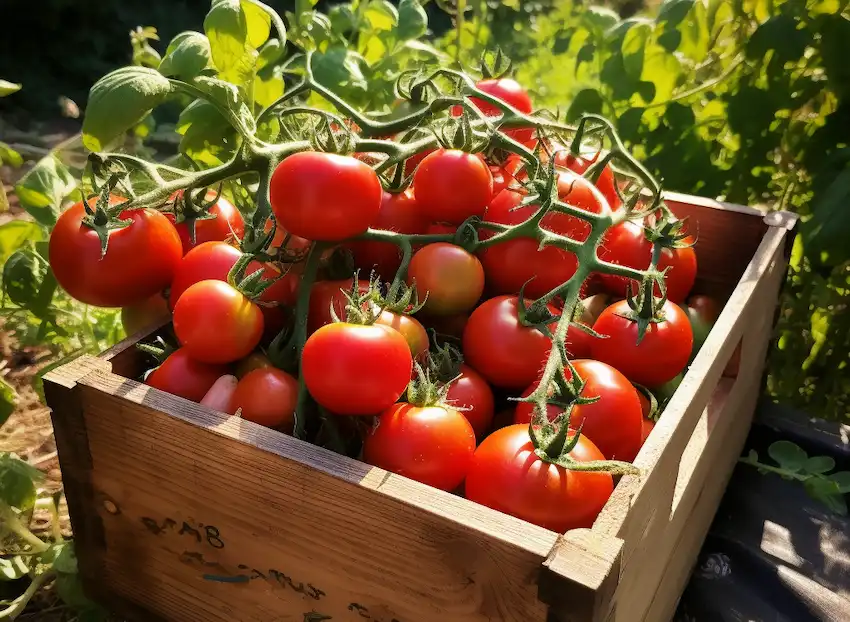Upside-down tomato gardening is not just a creative way to utilize space, but it also comes with a host of benefits that enhance the gardening experience. Here’s why you should consider this method for growing tomatoes:
- Space Efficiency: Ideal for urban gardeners, upside-down growing makes excellent use of vertical space. This is especially beneficial for those with limited ground area, such as apartment balconies or small yards.
- Enhanced Airflow and Health: By suspending the plants in the air, there’s increased airflow around the leaves and fruit. This improved circulation significantly reduces the likelihood of fungal diseases, which often plague plants in damp, stagnant conditions.
- Fewer Pests and Soil-Borne Diseases: Elevating tomatoes off the ground shields them from various ground pests and soil-borne diseases. This results in healthier plants and potentially greater yields.
- Ease of Maintenance: Upside-down tomatoes require less physical effort as there’s no need for staking or caging. It’s also easier to tend to these plants without the need for bending or kneeling, making it a more comfortable gardening experience.
- Minimal Weeding: This method practically eliminates the need for weeding, as the soil is contained within a bottle and not exposed to the typical weed seeds found in garden soil.
- Effective Watering: Watering from the top ensures that water and nutrients reach the roots directly. This method can help in better root nourishment, though it’s important to monitor the moisture levels as the soil may dry out faster.
- Visual Appeal: Upside-down tomato plants add a unique and intriguing element to any garden space, combining functionality with aesthetic appeal.
The Method – Growing Upside Down Tomatoes

Here’s a detailed guide on how to set up your upside-down tomato garden:
Materials Required:
- Used plastic bottles (2 liters or larger, with larger sizes being more ideal)
- Cherry tomato plant seedlings
- Masking tape
- Hole punch
- Knife
- Strong twine
- High-quality soil or compost
Step-by-Step Guide:
- Prepare the Bottle: Thoroughly clean the plastic bottles and remove any labels. With a knife, carefully cut off the bottom of the bottle, ensuring a smooth cut.
- Smooth the Edges: To avoid any sharp edges, cover the cut edge with masking tape. Then, using a hole punch, make four evenly spaced holes around the circumference of the bottle for the twine.
- Plant the Seedling: Invert the bottle so that the mouth is at the bottom. Carefully insert the cherry tomato seedling through the mouth, ensuring the plant’s root ball is well-positioned inside the bottle.
- Add Soil: Fill the bottle with soil or compost, leaving some space at the top for watering.
- Secure with Twine: Feed the twine through the holes you’ve made, creating a stable support for the bottle. Knot the twine securely.
- Choose the Right Spot: Hang your bottle in a location that receives plenty of sunlight, as tomatoes thrive in sunny conditions.
- Regular Watering: Check your hanging tomato plants regularly, ensuring that the soil is consistently moist but not waterlogged. This is crucial as the soil in the bottle can dry out faster than ground soil.

By following these steps, you can successfully set up an upside-down tomato garden that not only saves space but also provides a unique and rewarding gardening experience. Remember to regularly monitor your plants for water and nutrient needs, and enjoy the process of watching your hanging tomatoes grow!